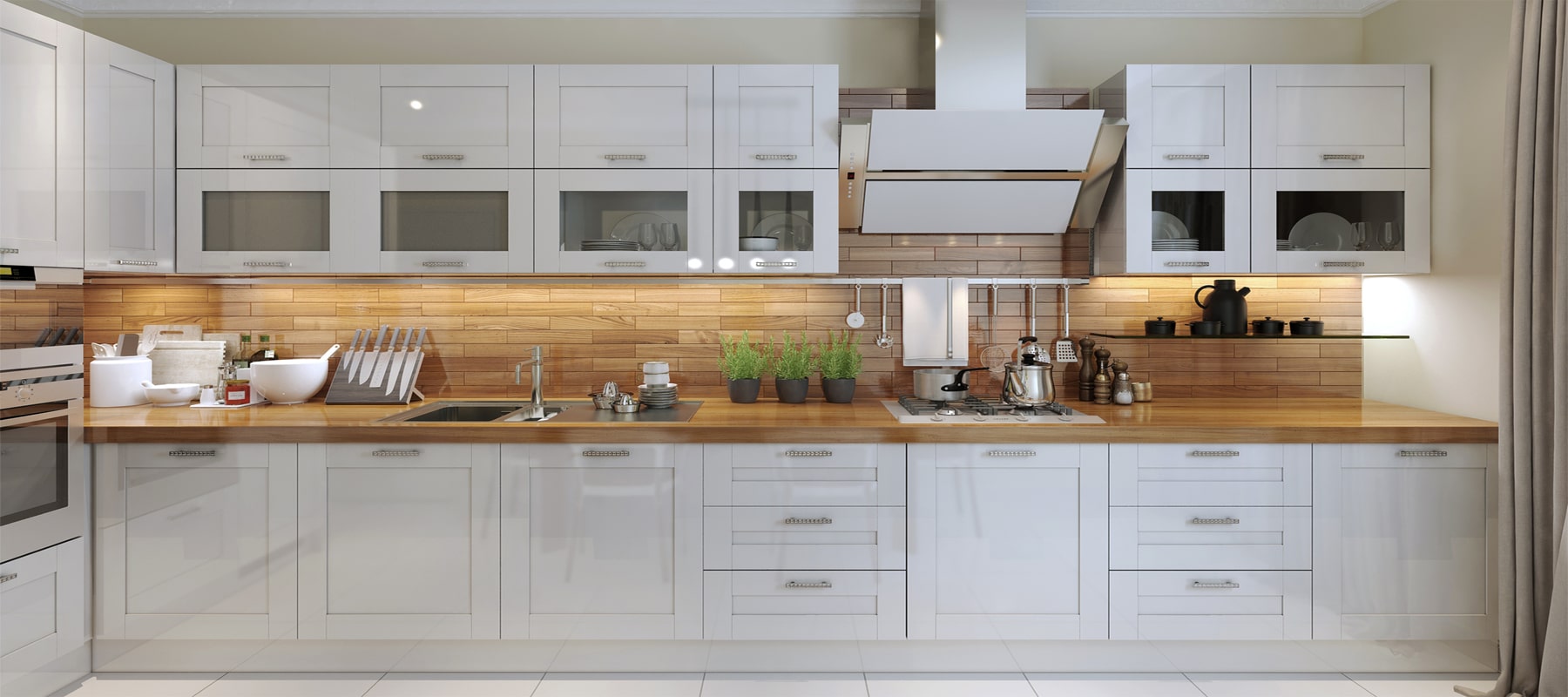Browse all articles for: Kitchens
How Much Does a Kitchen Sink Cost?
Last Updated: January 19, 2022
On This Page
Both prominent and widely used, kitchen sinks must bridge the gap between style and function. But with so many sinks and options available, finding the perfect sink and faucet setup for your kitchen can be overwhelming. This buying guide from Cost Owl aims to simplify the kitchen sink selection process by breaking down the most important considerations, including pricing.
Kitchen Sink Options #
Use the following factors as a starting point for your new kitchen sink setup:
Sink Material #
- Stainless steel is a very popular choice for kitchen sinks due to its durability, easy upkeep, and reasonable price tag. 18 gauge or thicker (the lower the gauge, the thicker the steel) is recommended for a sink that wears better and is quieter (insulation can be added to reduce the drumming of running water). A brushed satin finish will hide water marks and scratches, while a mirror finish is harder to keep clean.
- Enameled steel or cast iron sinks have a surface layer of enameled porcelain that is glossy, durable, and available in many colors. The surface can chip, however, if struck hard enough. Well insulated, cast iron is quiet and retains heat, making it good for dish-washing. Iron is heavier than steel, however, and requires a sufficiently sturdy countertop. Steel is a bit more affordable but doesn't perform as well.
- Solid surface sinks are nonporous and sold in a huge range of colors. Marks can be removed with light buffing, as the color is consistent throughout the material. Solid surface sinks can be fully integrated with a solid surface countertop for a seamless, sanitary kitchen surface.
- Engineered stone sinks, also known as composite sinks, contain real stone fragments mixed with acrylic binders for added strength and stain resistance. Hard as well as heat and scratch resistant, these sinks are similar to solid surface but more closely resemble stone. Composite granite, quartz, and soapstone are popular.
- Acrylic sinks made from plastic and fiberglass are scratch and stain resistant, easy to maintain, and affordable.
- Vitreous china and fireclay sinks are both made from molded clay, but fireclay is thicker and baked at a higher temperature, resulting in a denser, more durable surface. Both materials are highly stain and scratch resistant, but fireclay is less likely to chip. Because it's more mass produced, vitreous china is cheaper than fireclay.
- Copper kitchen sinks have a distinctive look, especially as they age and take on a patina. Some types of copper are naturally antimicrobial. Like stainless steel, pay attention to the gauge (thickness) of the copper for a better-performing sink. Copper won't rust and generally requires little maintenance. You'll likely have to custom-order a copper sink, making it an expensive choice. Brass and bronze sinks are also available.
Other Considerations #
Once you've chosen a kitchen sink material, you'll want to give some thought to the following options:
- Mounting style: Most kitchen sinks are either drop-in (the edge of the sink rests on the counter) or undermount (installed beneath the countertop surface). Undermount sinks provide a smooth, clean look and easy clean up. Drop-in sinks have a lip that can attract moisture and debris can accumulate (although undermount sinks can collect grime too). Other installation types include flush mount/tile edge (the sink and countertop tile are flush to one another) and integral (not every countertop materials are compatible with an integral sink).
- Sink Holes: A typical kitchen sink has four pre-drilled holes to accommodate the faucets and accessories (such as sprayers, built-in soap dispensers, and water filters). Extra holes can be added if necessary and you can also custom order a sink with the exact number of holes you need. Covers are used to conceal extra holes.
- Size: If you're replacing an existing sink, you'll need to order a new sink with the same dimensions (a slightly larger sink can be installed by increasing the cutout size). For a kitchen remodel, feel free to choose any sink you like (as long as it fits in the cabinet).
- Configuration: Kitchen sinks can have as many as three bowls, although one and two bowl sinks are more common. Single bowl sinks are recommended for kitchens smaller than 150 sq. ft. Most bowls are 8 to 10 inches deep, but deeper bowls, which are better for cleaning large pots and pans, are available. Choose bowls with varying depths for maximum utility. Deeper bowls might present ergonomic issues.
Kitchen Sink Average Costs #
- You can spend anywhere from $50 to $1,500 or more for a new kitchen sink. There are many well-made sinks, however, priced at $200 to $500.
- Kitchen sink installation costs an additional $150 to $300 depending on the difficulty of the job. If you're moving the sink location or adding a second sink, it might be necessary to add a water line ($250 to $350). Modern kitchen sinks are relatively easy to install (Bob Vila shows you how on his blog).
- For inspiration, head to your local home improvement store and browse their selection of kitchen sinks, some of which may even have running water. Good online resources include HGTV, Better Homes & Gardens, and This Old House.
